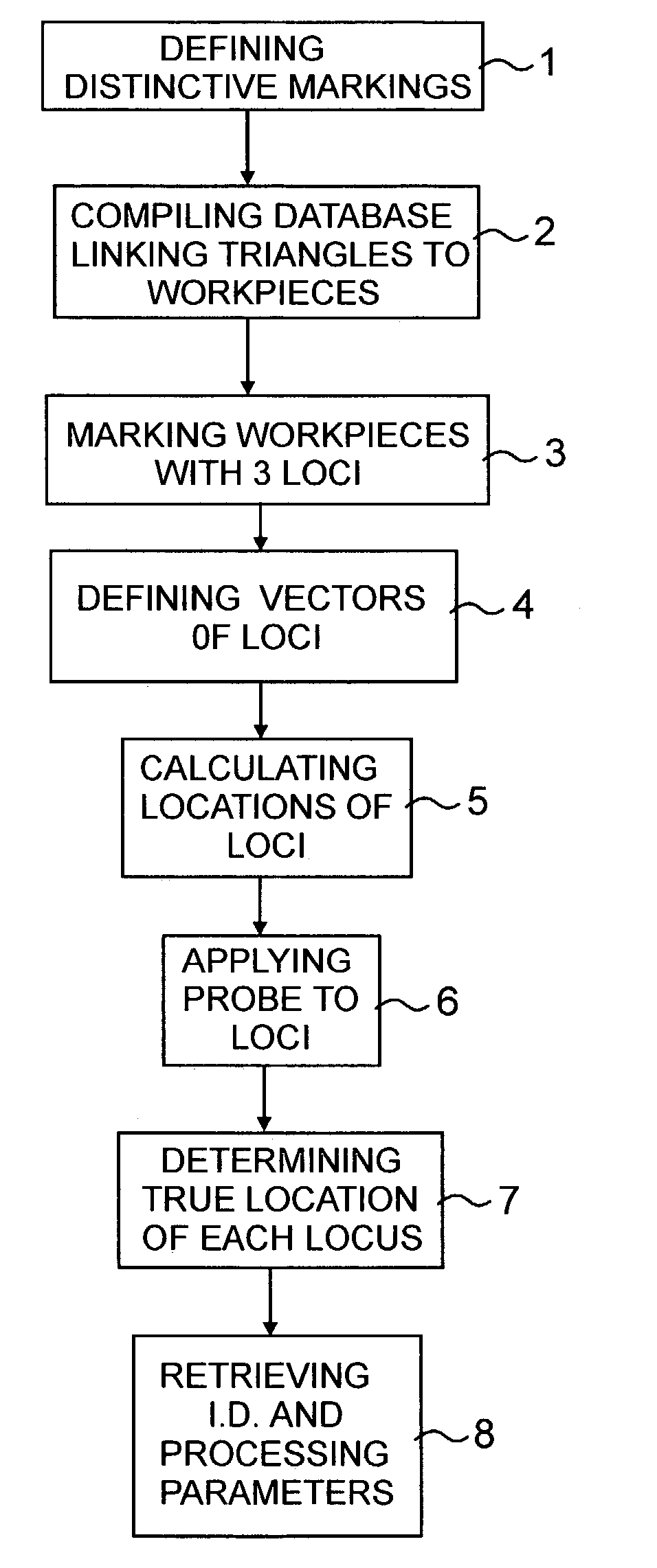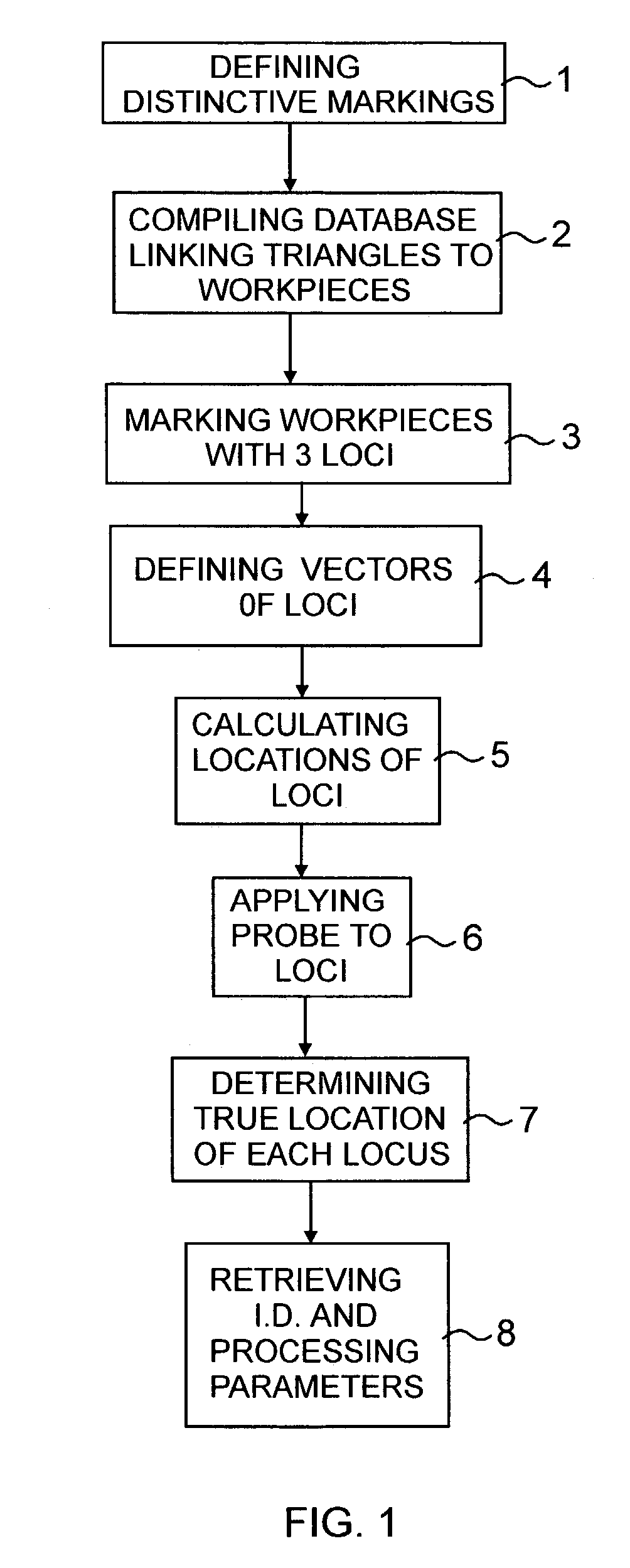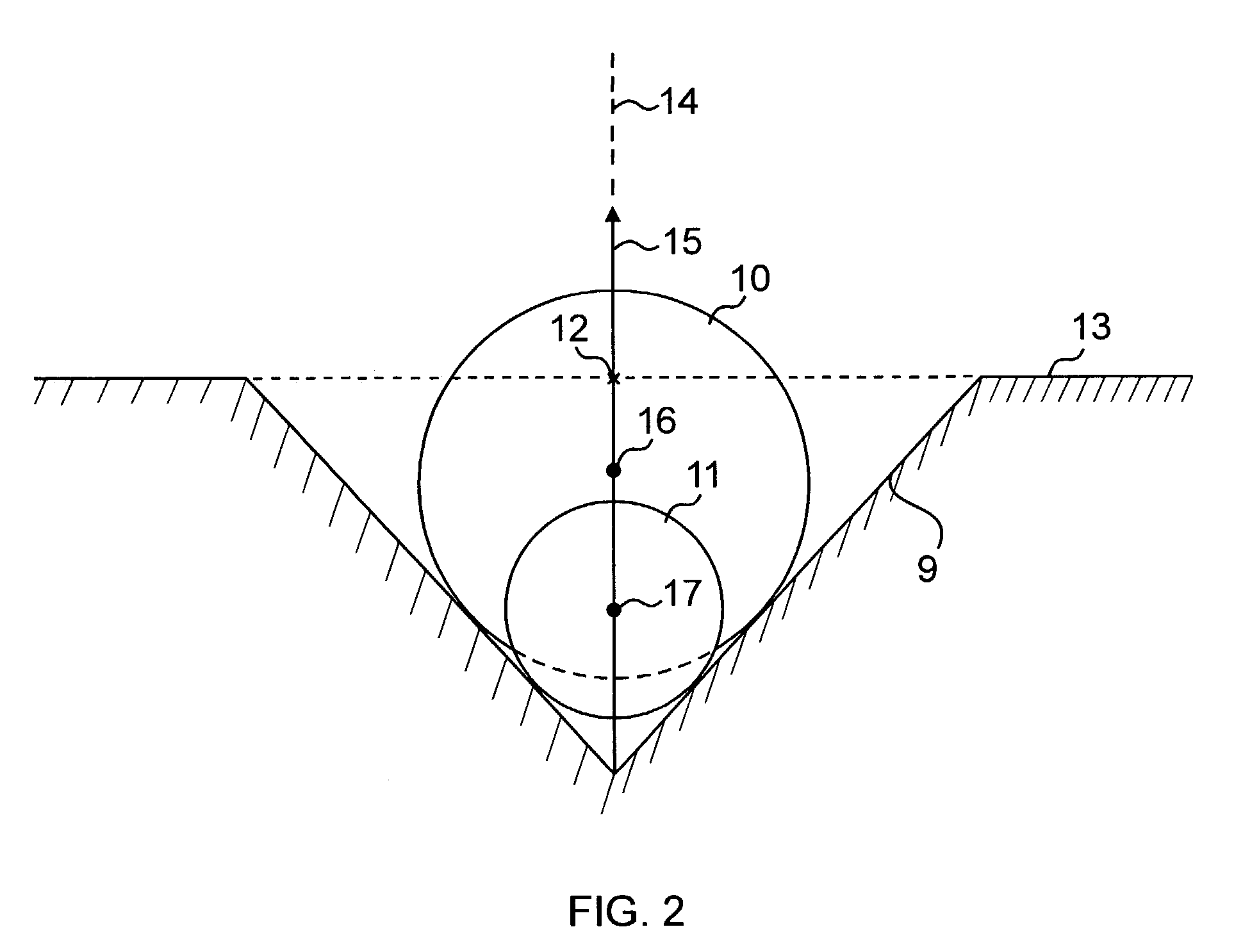Spatial coordinate-based method for identifying work pieces
a spatial coordinate and work piece technology, applied in the field of multi-axis, articulated spatial measurement arms, can solve the problems of wrong processing parameters and consequential use of wrong parts, and achieve the effects of minimizing human errors, accelerating the whole process, and quick identification
- Summary
- Abstract
- Description
- Claims
- Application Information
AI Technical Summary
Benefits of technology
Problems solved by technology
Method used
Image
Examples
Embodiment Construction
[0007]Referring now to the drawing, there is illustrated in FIG. 1, the various steps which constitute the novel identification method. The process begins by the definition 1 of a plurality of distinctively different triangles which are dimensioned to be conveniently marked on a set of work pieces. Typically, each side of a triangle should be of a length equal to about 100 times the resolution of the measurement arm, it being understood that the larger the triangle that can be accommodated by a work piece, the more precise their measurement will be and, consequently, the more dimensionally close the various triangles can be.
[0008]Next, a data base is compiled 2 in which each triangle is referenced to a work piece and to its processing parameters. This referencing can be accomplished by tabulating the three lengths of the triangle sides with the work piece identification number or its literal definition. The processing parameters may be tabulated in the same or an associated data bas...
PUM
 Login to View More
Login to View More Abstract
Description
Claims
Application Information
 Login to View More
Login to View More - R&D
- Intellectual Property
- Life Sciences
- Materials
- Tech Scout
- Unparalleled Data Quality
- Higher Quality Content
- 60% Fewer Hallucinations
Browse by: Latest US Patents, China's latest patents, Technical Efficacy Thesaurus, Application Domain, Technology Topic, Popular Technical Reports.
© 2025 PatSnap. All rights reserved.Legal|Privacy policy|Modern Slavery Act Transparency Statement|Sitemap|About US| Contact US: help@patsnap.com



